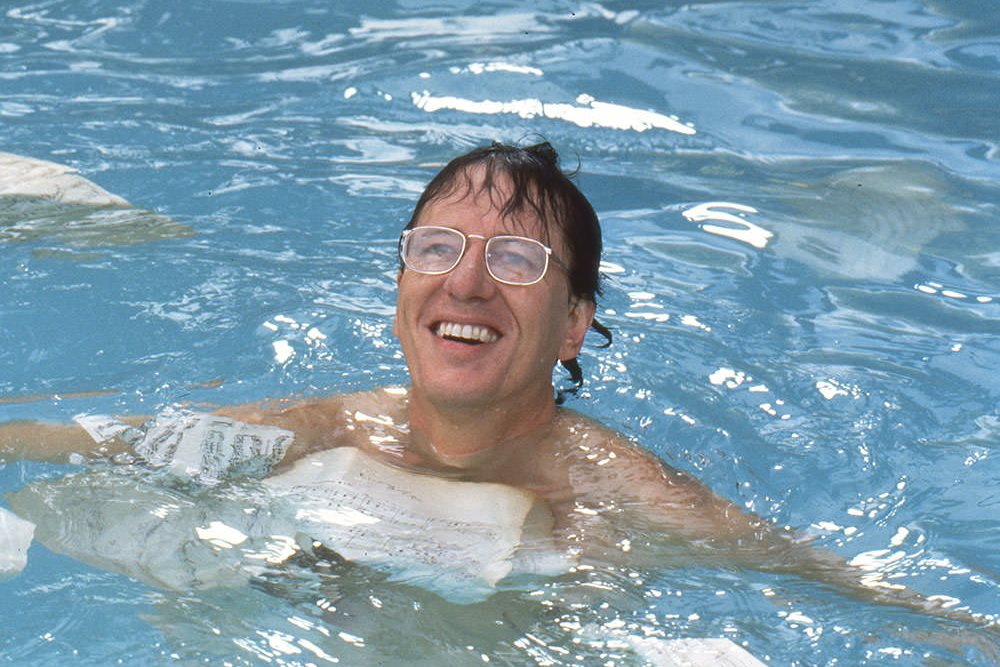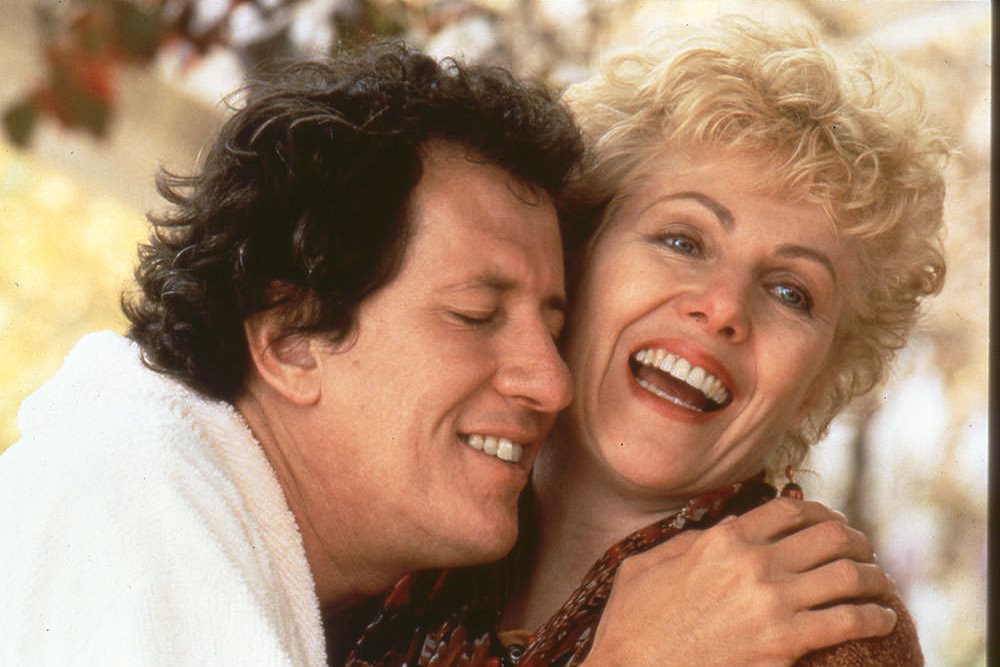Scott Hicks reflects on Shine, 20 years on
For its 20th anniversary, Scott Hicks looks back on the “long, arduous” process that was developing and financing Shine and why it was worth every minute.
“Nobody wanted to make this film. That was just a fact.”
For director and co-writer Scott Hicks, Shine was an exercise in persistence – and perhaps obsession.
As the iconic Australian film turns 20 years old, it’s hard to believe it was so difficult to get made – and largely because investors would not support a film with then-unknown theatre actor Geoffrey Rush headlining it (Rush went onto win the Best Actor Academy Award® for his superb portrayal).
“It was a problem,” Hicks remembers in Sydney.
“Geoffrey’s well aware of this. There were all sorts of attempts to get rid of him because there were people who wanted to make the film as long as I didn’t use Geoffrey…
“But to me he was perfect.”
 Geoffrey Rush as David Helfgott in Shine
Geoffrey Rush as David Helfgott in Shine
However, the hurdles started much earlier than casting.
There was the initial challenge of writing the first draft of the screenplay, which was teased out through conversations with eccentric pianist David Helfgott – whose life the story is based on.
But, as those of you who have seen Shine know, Helfgott is a ball of endearing energy, skipping from topic to topic without taking a break. Upon meeting Helfgott, the first thing you’re struck with is just how accurate Rush’s depiction of him was.
“A conversation with David is not a straightforward, linear, coherent narrative. It meanders and weaves, but if you have patience, if you spend time you can double back on something where he’s made a point, and you can pick up that idea,” Hicks says.
“So you get a mosaic of information and eventually you can begin to piece things together.”
Hicks first came across Helfgott in Adelaide on May 28th, 1985, when he read a newspaper article saying the pianist was performing that night and felt compelled to go.
The performance, he recalls, was an astonishing experience, and right then and there, he knew there was a story behind this that needed to be told.
It took over a year to win over Helfgott and his wife Gillian, with Hicks saying at the time of Shine’s release that he persevered because he was so inspired by the pianist’s story.
Once they agreed on how to translate Helfgott’s story for the screen, Hicks got stuck into the research with friend and colleague John MacGregor. It meant not only interviewing Helfgott, but his family, his friends, teachers and people who knew him when he came out of the psychiatric facility.
Slowly the narrative started coming together and MacGregor and Hicks developed an early treatment of the story.
From there, Hicks wrote the first draft. In 1990, he brought screenwriter Jan Sardi on board, who had been script editor on Hicks’ feature Sebastian and the Sparrow.
“Jan worked really closely with me and then wrote the final draft of the screenplay, so by 1990 or 91 we had the script in shape, but our problems were really only just beginning,” he says.
Financing, he recalls, “was a long and arduous process”.
“We brought Jane Scott onto the film as producer and she worked tirelessly with me to pull interest, and that in itself was a long process of again about four years,” he says.
In production notes from the film’s release, producer Scott says: “A low budget film would have been easier to finance but the film would have been harder to make properly… a higher budget meant going overseas for a bigger proportion of the finance, which was immediately more challenging.”
At the forefront, was the issue with casting the then-unknown Rush over a big-name movie star.
It was around 1992 that Hicks says he sat down with Rush for the first time. He already knew Rush could act, having been familiar with his work in Adelaide theatre. “He was mesmerising on stage and he had the physiognomy, and physiology and the hands to play David,” he says.
But no one else seemed to agree.
Hicks says they had received “fairly modest” money from a number of different sources while developing the screenplay, and went from one entity to another in search of further funds.
“Because each entity would get a bit bored with the idea and (think) ‘it’s never going to happen’ so you’d have to go somewhere else… People would get enthusiastic for a minute and then you’d move on again,” he says.
“It’s like nobody had the stamina and we had to provide that.”
Hicks started to feel like he was developing a reputation.
“When I walked into a room, a film industry gathering, I almost could feel people saying, ‘oh god here he comes with that crazy piano story again’. It was the only thing I was obsessed with,” he says.
“But that obsession ultimately, it paid off.”
 Geoffrey Rush and Lynn Redgrave in Shine
Geoffrey Rush and Lynn Redgrave in Shine
Ronin Films signed on as Australasian distributor at the script stage, but the crucial piece of the pie came in the form of a deal with Pandora Cinema who acquired the international and U.S. rights.
Hicks says Pandora was “kind of a foreign sale distribution entity” and the first piece of commercial interest.
“The difference there was the person we were dealing with had seen Geoffrey Rush on stage in Sydney and so knew what I was talking about when I said this actor is extraordinary,” he says.
“And secondly he had seen some of my documentary work on television in France so he sort of knew what I had done.”
In 1994, Hicks had just won an Emmy for his documentary Submarines: Sharks of Steel and says he went straight from the ceremony to meet with Pandora Cinema.
The deal was a pivotal moment. “It triggered the rest,” Hicks says in Shine’s production notes. “The FFC (Film Finance Corporation, Screen Australia’s predecessor), and the BBC and SAFC, and Film Victoria. It was quite a mixed bag. At one point I was dealing with 18 different lawyers.”
Looking back now, Hicks calls it a “fragile coalition of financial interests”.
“It seems to me that the two hardest pieces of money to get are always the first and the last. It’s that first 10 per cent that kicks you off but filling the last 10 per cent is always just as hard.”
So then, how did Hicks feel going into production, after trying to pitch this film and get investors to believe it in for so long?
“The weird thing was, when all the money finally clicked into place, I had virtually a kind of panic attack because I thought, ‘now I’ve actually got to do it’,” he says.
But he need not have worried. Hicks had lived with Shine for so long he knew it inside and out.
“Making the film, it was difficult, it was complicated, but it was ever-exhilarating. I fed off the energy of making it. I felt at my most relaxed. I knew where every piece of the story came from,” he says.
“That was the positive thing I took out of the 10 years of thinking about it and working at it.”
Shine went onto earn Hicks two Academy Award® nominations (Best Writing and Best Director) as well as a place in cinema history.
Now, looking back on the experience of Shine, with all its highs and lows, Hicks doesn’t hesitate in his answer.
“The thing is, it was so worth it,” he says.
“Yes it works as an entertainment, it’s an engaging piece of filmmaking, but there was something about Shine that just touched people to their core and that’s a rare experience.
“And it changed lives. It changed my life; Kerry, my wife who developed it with me all those years; Jan Sardi became a major screenwriter; Geoffrey Rush became a movie star; and David Helfgott got his career back.
“So those 10 years of a seemingly desperate and hopeless kind of struggle, it was worth every minute.”
Shine is screening at select cinemas to coincide with the 20th anniversary. Also visit Screen Australia’s The Screen Guide for online viewing options.

What to read next
Shine director Scott Hicks reflects on his return to the world of music for the documentary Highly Strung.
18 May 2016
Caris Bizzaca